
Irish cricket has a long and proud history dating back to at least the 18th century
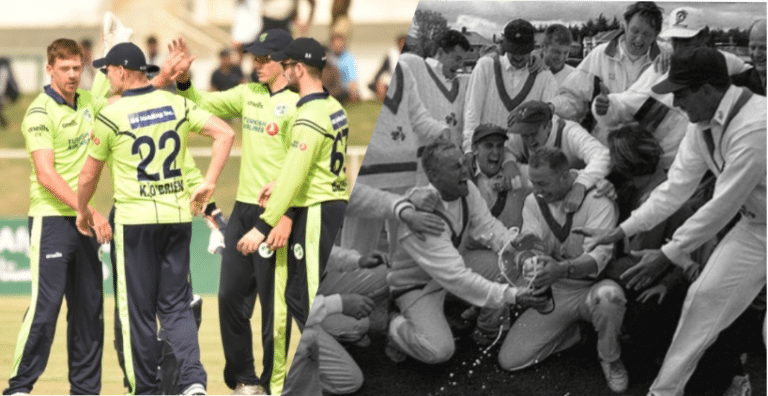
Since 1792, cricket has been played in Ireland, when the Military of Ireland and the Gentlemen of Ireland took each other on in the Phoenix Park, where the game still thrives in one of the world’s oldest established cricket clubs.
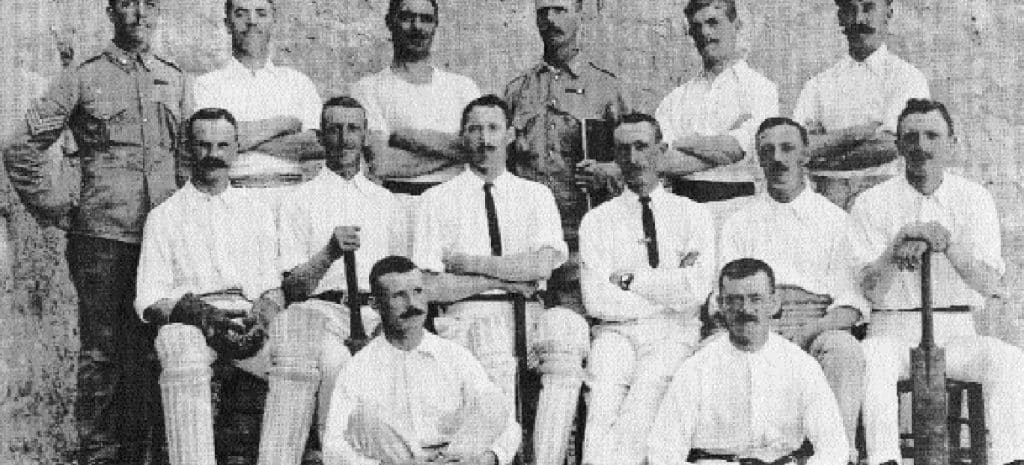
By the mid-1850’s the game had expanded to the point where it was the largest and most popular sport in the country, blind to class or creed. In fact, its success was such that the first team to represent Ireland beat their English counterparts in 1855, handing them a 107-run thrashing.
However, the game went into decline towards the end of the century, largely a victim of politics and class, as the growth of Gaelic Games became a rallying point for the disaffected and disenfranchised working-class tenants of Ireland against their upper-class, cricket-playing, landlords. Although the game of cricket itself was not anathema to the downtrodden, its affiliation to England was.
Although the game continued in the north of the country and in the heartlands of central and northern Dublin, the GAA introduced the draconian Law 27 in 1902, banning GAA players from either participating or even watching the so-called English sports of football, rugby or cricket. The ban lasted for more than 70 years, ensuring the game became unknown in much of the country.
The departure of the British in 1922 from the new Free State also contributed towards the game losing further ground, while in the north of the country it strengthened where ties to Britain remained strong.
The first semblances of organisation arrived with the formation of the Irish Cricket Union in 1927, with a brief to organise the national squad, primarily arranging fixtures against the Scots and the English MCC, with occasional visits by English Counties and Test teams.
Proper competitive national fixtures began for the Irish in 1980 with entry to the English Gillette Cup, but it was a long and often painful learning curve towards consistency and credibility, as it took 24 years to win a match in the competition, and encompassed three major disappointments in World Cup qualification between 1994 and 2001. The fact that Ireland ended the 2001 World Cup qualifying campaign as 8th best among the Associates (18th overall), and ended the World Cup in 2007 as the best Associate and 10th in the world overall speaks volumes for what happened next.
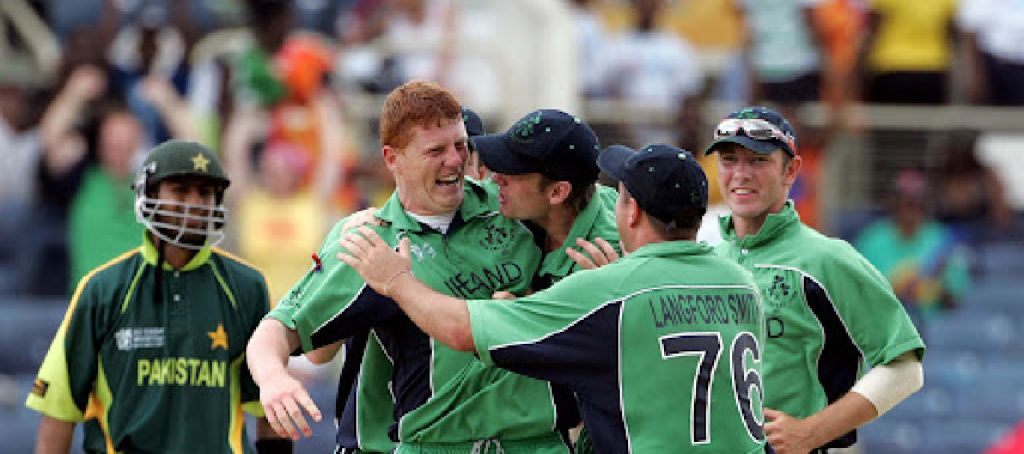
After mixed results during the coaching tenures of Mike Hendrick and Ken Rutherford, ICU recruited former Eastern Province Coach Adrian (Adi) Birrell to lead the side.
The squad soon made enormous strides, picking up prestigious scalps along the way: a 10-wicket victory over Zimbabwe in 2003; over mighty Surrey in the C&G Trophy in 2004; and against Brian Lara’s West Indies that same year. Ireland finally achieved the coveted qualification for a World Cup (in 2007) by finishing runners-up to Scotland in the ICC Trophy 2005, held on home ground at 25 venues north and south of the border.
Both on and off pitch, Ireland was taking significant strides forward, a fact further strengthened by the appointment of a Chief Executive in 2003, the Union’s first-ever full-time professional administrator. The positive effects of qualification were soon felt both in terms of profile and revenue as the Union began to receive increased funding from the ICC, but perhaps more tellingly from the Irish public purse and from the commercial sector, confirming the growth of the sport among key stakeholders.
2007 will go down as the year that Irish Cricket made its big breakthrough. Wins in the Caribbean World Cup against Pakistan and Bangladesh, and a tie against Zimbabwe on the biggest stage of all are unprecedented for an Associate Member country. These achievements have rocketed Irish Cricket to world attention and, perhaps more significantly, to a new prominence among the Irish public.
By the end of the event, Ireland was ranked 10th in the world, the first time ever an Associate outranked a Test-playing country. That same year, Ireland won the ICC Intercontinental Cup Trophy (the 4-day competition for the top Associates) for the second year in succession, confirming Ireland as the top country beneath Test level in both forms of the game.
After the World Cup, former West Indies cricketer Phil Simmons took over the role of coach from Adrian Birrell. India and South Africa both visited Belfast and played Ireland whilst also partaking in a series of One Day Internationals. William Porterfield took over the captaincy in 2008 from Trent Johnston having captained Ireland at every level from Under 13 age-group upwards he was the natural choice. He has led Ireland ever since, Ireland also secured success over Namibia in 2008 which gave them their third consecutive Intercontinental Cup title.
Reigning champions Ireland hosted the Division One of the European Championships in July 2009 and won their third European title, winning every game, including the decisive encounter against Scotland by seven wickets. In early August, Ireland hosted five other Associate nations at the ICC World Twenty20 Qualifier in Belfast. Ireland made their Twenty 20 International debut. Ireland progressed to the knock-out round of the tournament. Ireland defeated Kenya in the semi-finals to secure a place in the final against the Netherlands. The final was rained off and the teams shared the trophy. Ireland qualified for the ICC World Twenty20 and progressed to a second consecutive ‘Super 8’s’ after beating Bangladesh. Ireland then gave a very good account in the Super 8 group stages, nearly beating Sri Lanka at Lord’s, this alongside other good performances showed Ireland were here to stay at the top table of cricket.
It was less than a year later when Ireland qualified for another World event, the 2010 ICC World Twenty20, hosted in the West Indies in April and May. A loss to the West Indies in Ireland’s first group game coupled with England’s loss to the West Indies meant that only the winner would progress to the super eights. After 20 overs England finished on 120–8, and Ireland were on 14–1 when the game was rained off after 3.3 overs (not enough for D/L to come into play) resulting in England progressing to the super eight stage by net run rate and eventually on to be champions of the entire tournament.
The 2011 ICC Cricket World Cup was held between February and March and hosted by Bangladesh, India and Sri Lanka. Though Ireland did not progress beyond the first round they secured a historic victory against England. Ireland beat England by 3 wickets on 2 March 2011 with Kevin O’Brien hitting the fastest World Cup century off only 50 balls. It was the highest successful run chase (329 in 49.1 overs) in World Cup history. Taoiseach-in-waiting Enda Kenny was one of several high-profiles figures who congratulated the team saying “Their supreme effort will lift the spirits of every single Irish person, no matter where they are in the world.”
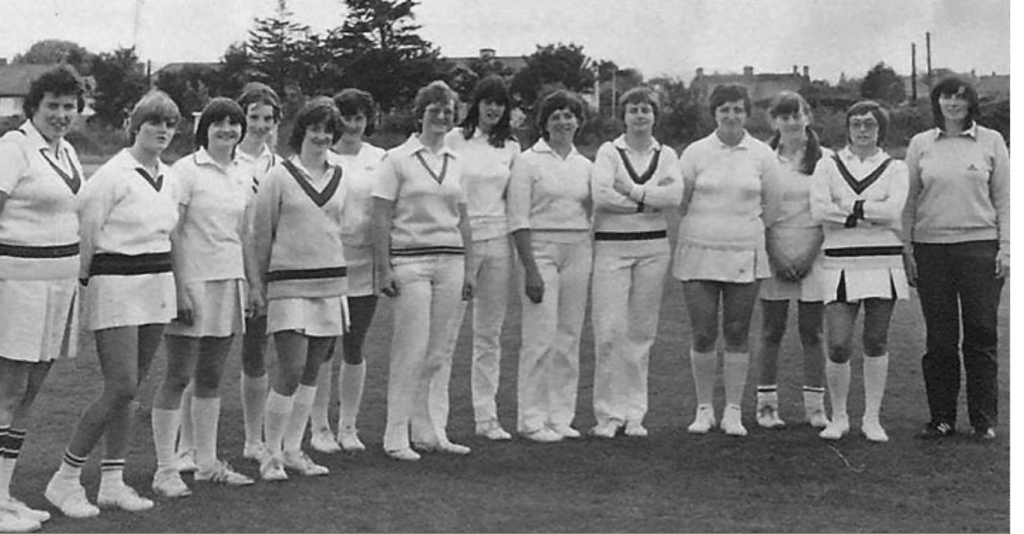
It’s not just the men who experience success on the pitch though as Ireland’s women continue to lead the world of associate women’s cricket. In fact it was the women who played at a Cricket World Cup long before the men, with the highlight of the women’s 5 world cup appearences being a fourth place finish in 1988.
Although they have found it more difficult to regularly qualify for world events of late, this is mainly due to the Women’s World Cup & T20 version both being 8 team events. Their last appearance was an eigth place finish at the 2005 edition in South Africa. In late 2011, the Irish Women travelled to the not so familiar climate of Bangladesh to face several of the world’s top sides to try and qualify for the 2013 edition of the Women’s World Cup – whilst they were unsuccessful in that attempt as the West Indies and Pakistan Women dominated their group, Ireland did retain their ODI status as well as their ranking as the world’s top associate side.
In March 2012, Ireland went to the 2012 ICC World Twenty Qualifier in the United Arab Emirates, following a loss in the opening match to Namibia by just four runs, Ireland had to qualify the hard way. Over the course of the next 11 days they played 10 matches and won every single one of them including defeating Afghanistan in the final, in a rematch of the 2010 edition of the tournament. Both the teams qualified for the 2012 ICC World Twenty20 in Sri Lanka that September. Paul Stirling was the highest run-scorer in the tournament with 357 runs including the second-fastest half-century ever in a T20I match off just 17 balls in the final.
The 2012 ICC World Twenty20 in Sri Lanka was Ireland’s 5th appearance in a World T20 event since 2007. Ireland were drawn in Group B with Australia and West Indies. In their first match against Australia, Ireland posted a below par 123-7 which the Aussies chased in the 16th over for the loss of just one wicket. The boys in green had one more chance to progress beyond the group stages - a win against West Indies would see them into the Super Eights stage of the competition. Unfortunately, Ireland’s first game in the tournament turned out to be their last as their second was washed out and Ireland were knocked out on inferior run-rate.
The Women’s cricket team gained promotion to Division 2 of the ECB County Championships in 2012 and after a winter of training had a huge summer in 2013. Ireland hosted the ICC Women’s T20 World Cup Qualifier in July of this year and with three teams qualifying from the tournament, the Women had a great chance to take part in their first Global tournament since 2005.
After beating Japan and Canada and losing to Sri Lanka in the group stages, Ireland played Pakistan, who came top of their group, for automatic qualification. After Ireland lost to Pakistan and The Netherlands lost to Sri Lanka in the other semi-final, it came down to a winner takes all tie between Ireland and The Netherlands to see who would take the third and final qualifying spot.
It was edge of the seat stuff to the last ball as Ireland batted first and posted a competitive 136/5. The Netherlands were always in with a chance and were left needing 8 from the last over, but Laura Delany held her nerve to see her team win by two runs. The women’s team will hope to travel to Bangladesh with their male counterparts in March of next year, but the men’s team will have to navigate their own qualifying tournament in November first.
Since 1792, cricket has been played in Ireland, when the Military of Ireland and the Gentlemen of Ireland took each other on in the Phoenix Park, where the game still thrives in one of the world’s oldest established cricket clubs.

By the mid-1850’s the game had expanded to the point where it was the largest and most popular sport in the country, blind to class or creed. In fact, its success was such that the first team to represent Ireland beat their English counterparts in 1855, handing them a 107-run thrashing.
However, the game went into decline towards the end of the century, largely a victim of politics and class, as the growth of Gaelic Games became a rallying point for the disaffected and disenfranchised working-class tenants of Ireland against their upper-class, cricket-playing, landlords. Although the game of cricket itself was not anathema to the downtrodden, its affiliation to England was.
Although the game continued in the north of the country and in the heartlands of central and northern Dublin, the GAA introduced the draconian Law 27 in 1902, banning GAA players from either participating or even watching the so-called English sports of football, rugby or cricket. The ban lasted for more than 70 years, ensuring the game became unknown in much of the country.
The departure of the British in 1922 from the new Free State also contributed towards the game losing further ground, while in the north of the country it strengthened where ties to Britain remained strong.
The first semblances of organisation arrived with the formation of the Irish Cricket Union in 1923, with a brief to organise the national squad, primarily arranging fixtures against the Scots and the English MCC, with occasional visits by English Counties and Test teams.
Proper competitive national fixtures began for the Irish in 1980 with entry to the English Gillette Cup, but it was a long and often painful learning curve towards consistency and credibility, as it took 24 years to win a match in the competition, and encompassed three major disappointments in World Cup qualification between 1994 and 2001. The fact that Ireland ended the 2001 World Cup qualifying campaign as 8th best among the Associates (18th overall), and ended the World Cup in 2007 as the best Associate and 10th in the world overall speaks volumes for what happened next.
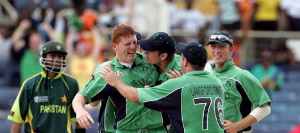
After mixed results during the coaching tenures of Mike Hendrick and Ken Rutherford, ICU recruited former Eastern Province Coach Adrian (Adi) Birrell to lead the side.
The squad soon made enormous strides, picking up prestigious scalps along the way: a 10-wicket victory over Zimbabwe in 2003; over mighty Surrey in the C&G Trophy in 2004; and against Brian Lara’s West Indies that same year. Ireland finally achieved the coveted qualification for a World Cup (in 2007) by finishing runners-up to Scotland in the ICC Trophy 2005, held on home ground at 25 venues north and south of the border.
Both on and off pitch, Ireland was taking significant strides forward, a fact further strengthened by the appointment of a Chief Executive in 2003, the Union’s first-ever full-time professional administrator. The positive effects of qualification were soon felt both in terms of profile and revenue as the Union began to receive increased funding from the ICC, but perhaps more tellingly from the Irish public purse and from the commercial sector, confirming the growth of the sport among key stakeholders.
2007 will go down as the year that Irish Cricket made its big breakthrough. Wins in the Caribbean World Cup against Pakistan and Bangladesh, and a tie against Zimbabwe on the biggest stage of all are unprecedented for an Associate Member country. These achievements have rocketed Irish Cricket to world attention and, perhaps more significantly, to a new prominence among the Irish public.
By the end of the event, Ireland was ranked 10th in the world, the first time ever an Associate outranked a Test-playing country. That same year, Ireland won the ICC Intercontinental Cup Trophy (the 4-day competition for the top Associates) for the second year in succession, confirming Ireland as the top country beneath Test level in both forms of the game.
After the World Cup, former West Indies cricketer Phil Simmons took over the role of coach from Adrian Birrell. India and South Africa both visited Belfast and played Ireland whilst also partaking in a series of One Day Internationals. William Porterfield took over the captaincy in 2008 from Trent Johnston having captained Ireland at every level from Under 13 age-group upwards he was the natural choice. He has led Ireland ever since, Ireland also secured success over Namibia in 2008 which gave them their third consecutive Intercontinental Cup title.
Reigning champions Ireland hosted the Division One of the European Championships in July 2009 and won their third European title, winning every game, including the decisive encounter against Scotland by seven wickets. In early August, Ireland hosted five other Associate nations at the ICC World Twenty20 Qualifier in Belfast. Ireland made their Twenty 20 International debut. Ireland progressed to the knock-out round of the tournament. Ireland defeated Kenya in the semi-finals to secure a place in the final against the Netherlands. The final was rained off and the teams shared the trophy. Ireland qualified for the ICC World Twenty20 and progressed to a second consecutive ‘Super 8’s’ after beating Bangladesh. Ireland then gave a very good account in the Super 8 group stages, nearly beating Sri Lanka at Lord’s, this alongside other good performances showed Ireland were here to stay at the top table of cricket.
It was less than a year later when Ireland qualified for another World event, the 2010 ICC World Twenty20, hosted in the West Indies in April and May. A loss to the West Indies in Ireland’s first group game coupled with England’s loss to the West Indies meant that only the winner would progress to the super eights. After 20 overs England finished on 120–8, and Ireland were on 14–1 when the game was rained off after 3.3 overs (not enough for D/L to come into play) resulting in England progressing to the super eight stage by net run rate and eventually on to be champions of the entire tournament.
The 2011 ICC Cricket World Cup was held between February and March and hosted by Bangladesh, India and Sri Lanka. Though Ireland did not progress beyond the first round they secured a historic victory against England. Ireland beat England by 3 wickets on 2 March 2011 with Kevin O’Brien hitting the fastest World Cup century off only 50 balls. It was the highest successful run chase (329 in 49.1 overs) in World Cup history. Taoiseach-in-waiting Enda Kenny was one of several high-profiles figures who congratulated the team saying “Their supreme effort will lift the spirits of every single Irish person, no matter where they are in the world.”
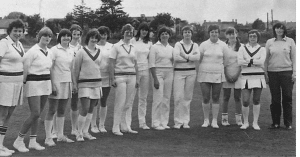
It’s not just the men who experience success on the pitch though as Ireland’s women continue to lead the world of associate women’s cricket. In fact it was the women who played at a Cricket World Cup long before the men, with the highlight of the women’s 5 world cup appearences being a fourth place finish in 1988.
Although they have found it more difficult to regularly qualify for world events of late, this is mainly due to the Women’s World Cup & T20 version both being 8 team events. Their last appearance was an eigth place finish at the 2005 edition in South Africa. In late 2011, the Irish Women travelled to the not so familiar climate of Bangladesh to face several of the world’s top sides to try and qualify for the 2013 edition of the Women’s World Cup – whilst they were unsuccessful in that attempt as the West Indies and Pakistan Women dominated their group, Ireland did retain their ODI status as well as their ranking as the world’s top associate side.
In March 2012, Ireland went to the 2012 ICC World Twenty Qualifier in the United Arab Emirates, following a loss in the opening match to Namibia by just four runs, Ireland had to qualify the hard way. Over the course of the next 11 days they played 10 matches and won every single one of them including defeating Afghanistan in the final, in a rematch of the 2010 edition of the tournament. Both the teams qualified for the 2012 ICC World Twenty20 in Sri Lanka that September. Paul Stirling was the highest run-scorer in the tournament with 357 runs including the second-fastest half-century ever in a T20I match off just 17 balls in the final.
The 2012 ICC World Twenty20 in Sri Lanka was Ireland’s 5th appearance in a World T20 event since 2007. Ireland were drawn in Group B with Australia and West Indies. In their first match against Australia, Ireland posted a below par 123-7 which the Aussies chased in the 16th over for the loss of just one wicket. The boys in green had one more chance to progress beyond the group stages - a win against West Indies would see them into the Super Eights stage of the competition. Unfortunately, Ireland’s first game in the tournament turned out to be their last as their second was washed out and Ireland were knocked out on inferior run-rate.
The Women’s cricket team gained promotion to Division 2 of the ECB County Championships in 2012 and after a winter of training had a huge summer in 2013. Ireland hosted the ICC Women’s T20 World Cup Qualifier in July of this year and with three teams qualifying from the tournament, the Women had a great chance to take part in their first Global tournament since 2005.
After beating Japan and Canada and losing to Sri Lanka in the group stages, Ireland played Pakistan, who came top of their group, for automatic qualification. After Ireland lost to Pakistan and The Netherlands lost to Sri Lanka in the other semi-final, it came down to a winner takes all tie between Ireland and The Netherlands to see who would take the third and final qualifying spot.
It was edge of the seat stuff to the last ball as Ireland batted first and posted a competitive 136/5. The Netherlands were always in with a chance and were left needing 8 from the last over, but Laura Delany held her nerve to see her team win by two runs. The women’s team will hope to travel to Bangladesh with their male counterparts in March of next year, but the men’s team will have to navigate their own qualifying tournament in November first.